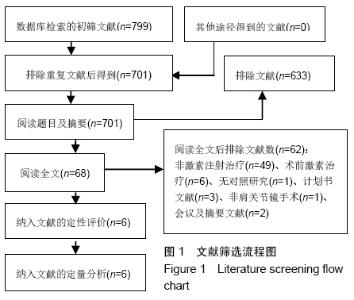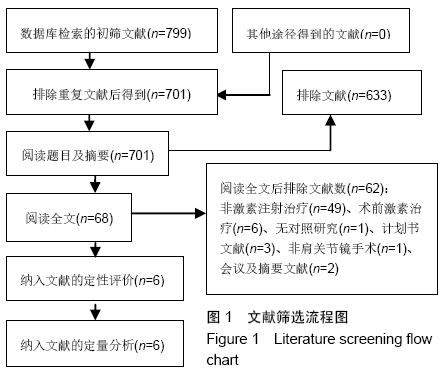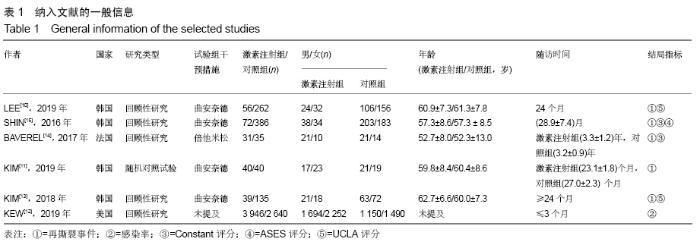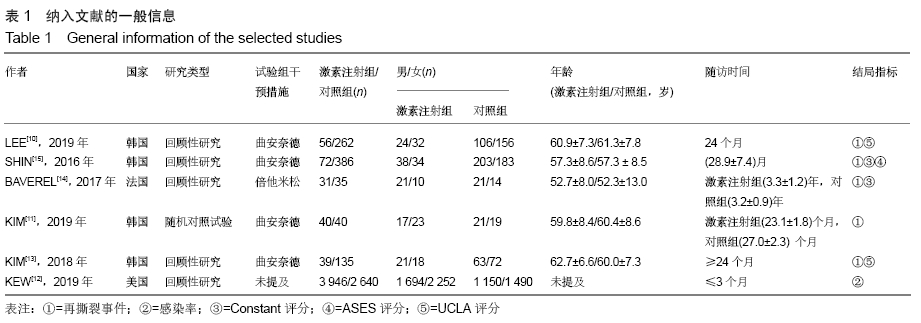[1] MOEN TC, RUDOLPH GH, CASWELL K, et al. Complications of shoulder arthroscopy.J Am Acad Orthop Surg. 2014;22(7): 410-419.
[2] JAIN NB, HIGGINS LD, LOSINA E, et al. Epidemiology of musculoskeletal upper extremity ambulatory surgery in the United States. BMC Musculoskelet Disord.2014;15:4.
[3] RUIZ-SUAREZ M, BARBER FA. Postoperative pain control after shoulder arthroscopy. Orthopedics.2008;31(11):1130.
[4] CONN RA, COFIELD RH, BYER DE, et al.Interscalene block anesthesia for shoulder surgery. Clin Orthop Relat Res. 1987 (216):94-98.
[5] CHUNG SW, HUONG CB, KIM SH, et al. Shoulder stiffness after rotator cuff repair: risk factors and influence on outcome. Arthroscopy.2013;29(2):290-300.
[6] GIALANELLA B, PROMETTI P. Effects of corticosteroids injection in rotator cuff tears. Pain Med.2011;12(10):1559-1565.
[7] OMAR M, HAAS P, ETTINGER M, et al. Simultaneous Bilateral Quadriceps Tendon Rupture following Long-Term Low-Dose Nasal Corticosteroid Application.Case Rep Orthop. 2013;2013:657845.
[8] HIEMSTRA LA, MACDONALD PB, FROESE W. Subacromial infection following corticosteroid injection. J Shoulder Elbow Surg.2003;12(1):91-93.
[9] MOHER D, LIBERATI A, TETZLAFF J, et al. Preferred reporting items for systematic reviews and meta-analyses: the PRISMA statement.PLoS Med.2009;6(7):e1000097.
[10] LEE W, KIM SJ, CHOI CH, et al. Intra-articular injection of steroids in the early postoperative period does not have an adverse effect on the clinical outcomes and the re-tear rate after arthroscopic rotator cuff repair. Knee Surg Sports Traumatol Arthrosc.2019;27(12):3912-3919.
[11] KIM YS, JIN HK, LEE HJ, et al. Is It Safe to Inject Corticosteroids Into the Glenohumeral Joint After Arthroscopic Rotator Cuff Repair? Am J Sports Med. 2019;47(7): 1694-1700.
[12] KEW ME, CANCIENNE JM, CHRISTENSEN JE, et al. The Timing of Corticosteroid Injections After Arthroscopic Shoulder Procedures Affects Postoperative Infection Risk. Am J Sports Med 2019;47(4):915-921.
[13] KIM IB, JUNG DW. An Intra-articular Steroid Injection at 6 Weeks Postoperatively for Shoulder Stiffness After Arthroscopic Rotator Cuff Repair Does Not Affect Repair Integrity. Am J Sports Med.2018;46(9):2192-2202.
[14] AVEREL L, BOUTSIADIS A, REYNOLDS RJ, et al. Do corticosteroid injections compromise rotator cuff tendon healing after arthroscopic repair? JSES Open Access. 2018; 2(1):54-59.
[15] SHIN SJ, DO NH, LEE J, et al. Efficacy of a Subacromial Corticosteroid Injection for Persistent Pain After Arthroscopic Rotator Cuff Repair.Am J Sports Med.2016;44(9):2231-2236.
[16] ITOI E, ARCE G, BAIN GI, et al. Shoulder Stiffness: Current Concepts and Shoulder Stiffness: Current Concepts and Concerns. Arthroscopy.2016;32(7):1402-1414.
[17] FAVEJEE MM, HUISSTEDE BM, KOES BW. Frozen shoulder: the effectiveness of conservative and surgical interventions- systematic review.Br J Sports Med. 2011;45(1):49-56.
[18] DENARD PJ, LADERMANN A, BURKHART SS. Prevention and management of stiffness after arthroscopic rotator cuff repair: systematic review and implications for rotator cuff healing. Arthroscopy.2011;27(6):842-848.
[19] NAKAMURA H, GOTOH M, KANAZAWA T, et al. Effects of corticosteroids and hyaluronic acid on torn rotator cuff tendons in vitro and in rats.J Orthop Res. 2015;33(10): 1523-1530.
[20] MUTO T, KOKUBU T, MIFUNE Y, et al. Temporary inductions of matrix metalloprotease-3 (MMP-3) expression and cell apoptosis are associated with tendon degeneration or rupture after corticosteroid injection.J Orthop Res. 2014;32(10): 1297-1304.
[21] RAMÍREZ JP, BONATI-RICHARDSON F, GARCÍA MP, et al. Intra-articular treatment with corticosteroids increases apoptosis in human rotator cuff tears.Connect Tissue Res.
[22] BONNEVIALLE N, BAYLE X, FARUCH M, et al. Does microvascularization of the footprint play a role in rotator cuff healing of the shoulder? J Shoulder Elbow Surg. 2015;24(8): 1257-1262.
[23] HEYER JH, KUANG X, AMDUR RL, et al. Identifiable risk factors for thirty-day complications following arthroscopic rotator cuff repair. Phys Sportsmed.2018;46(1):56-60.
[24] HILL JR, MCKNIGHT B, PANNELL WC, et al. Risk Factors for 30-Day Readmission Following Shoulder Arthroscopy. Arthroscopy. 2017;33(1):55-61.
[25] MARTIN CT, GAO Y, PUGELY AJ, et al. 30-day morbidity and mortality after elective shoulder arthroscopy: a review of 9410 cases.J Shoulder Elbow Surg.2013;22(12):1667-1675.
|













